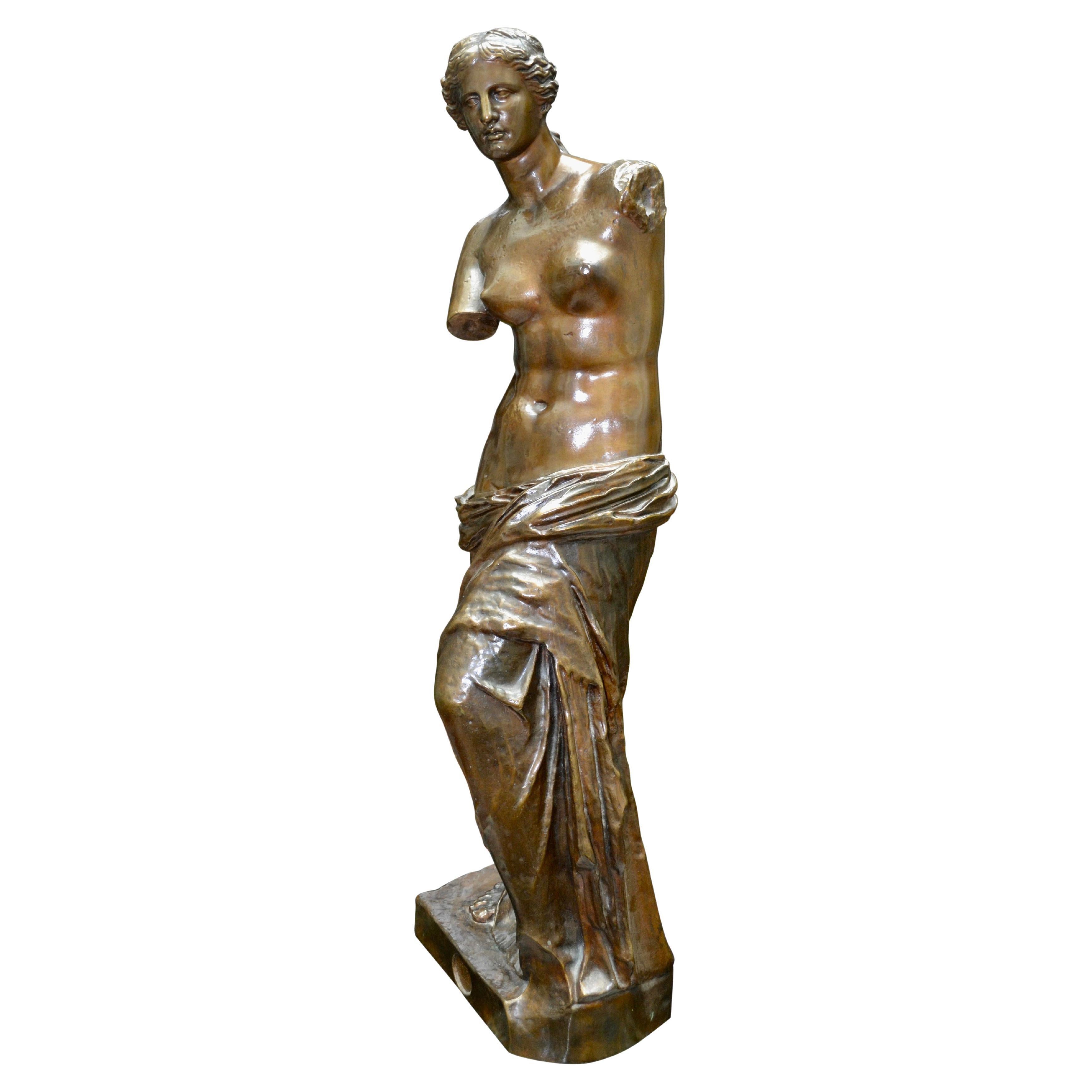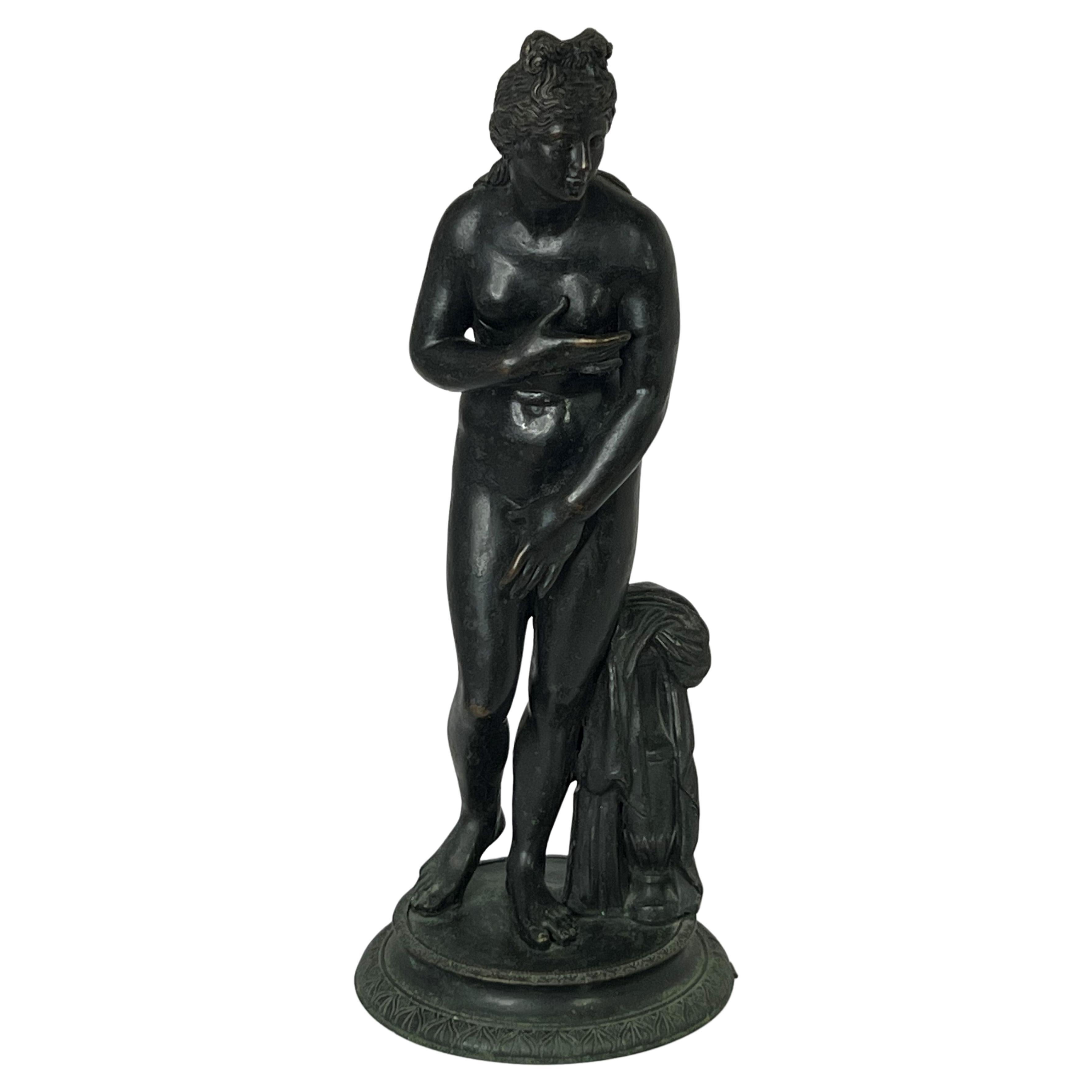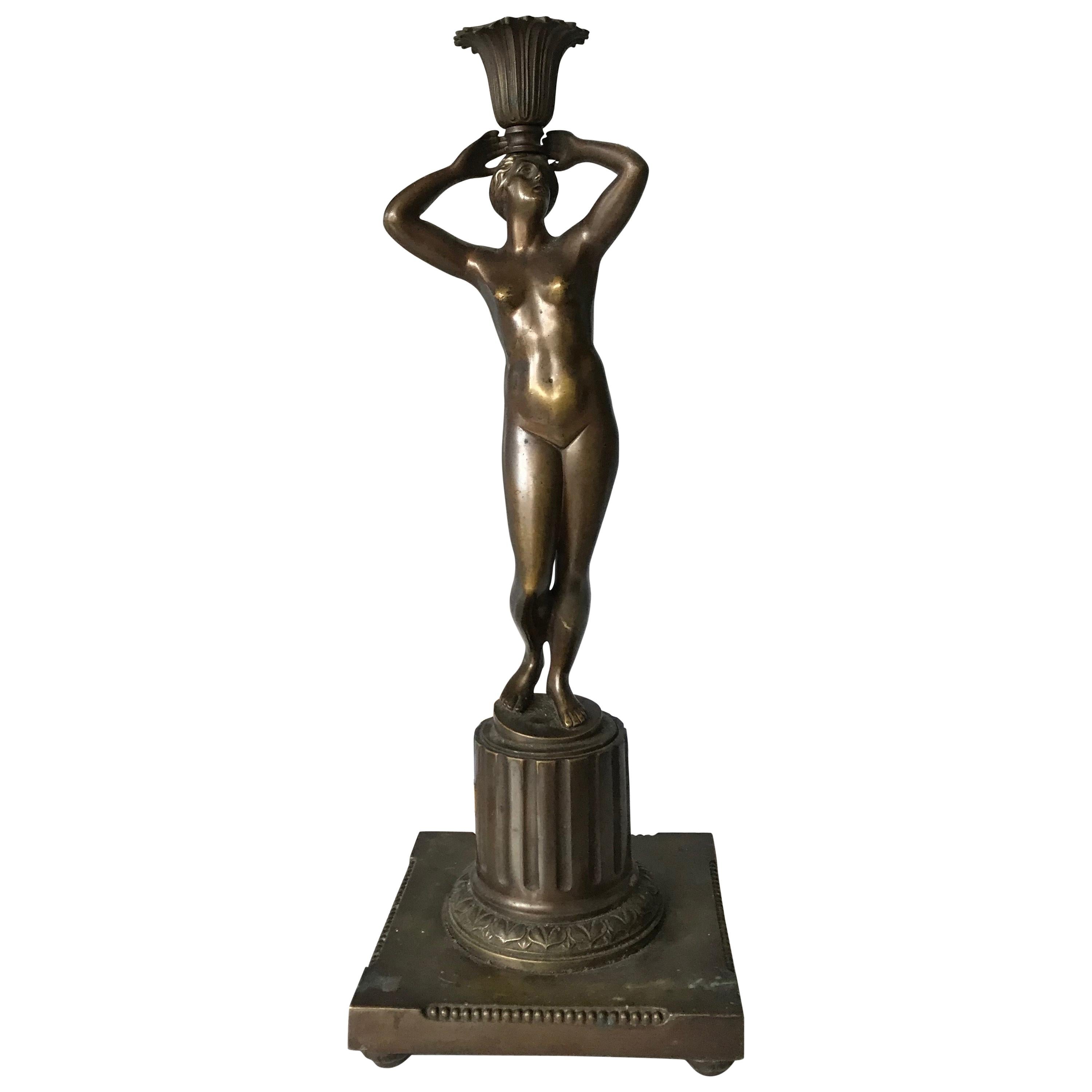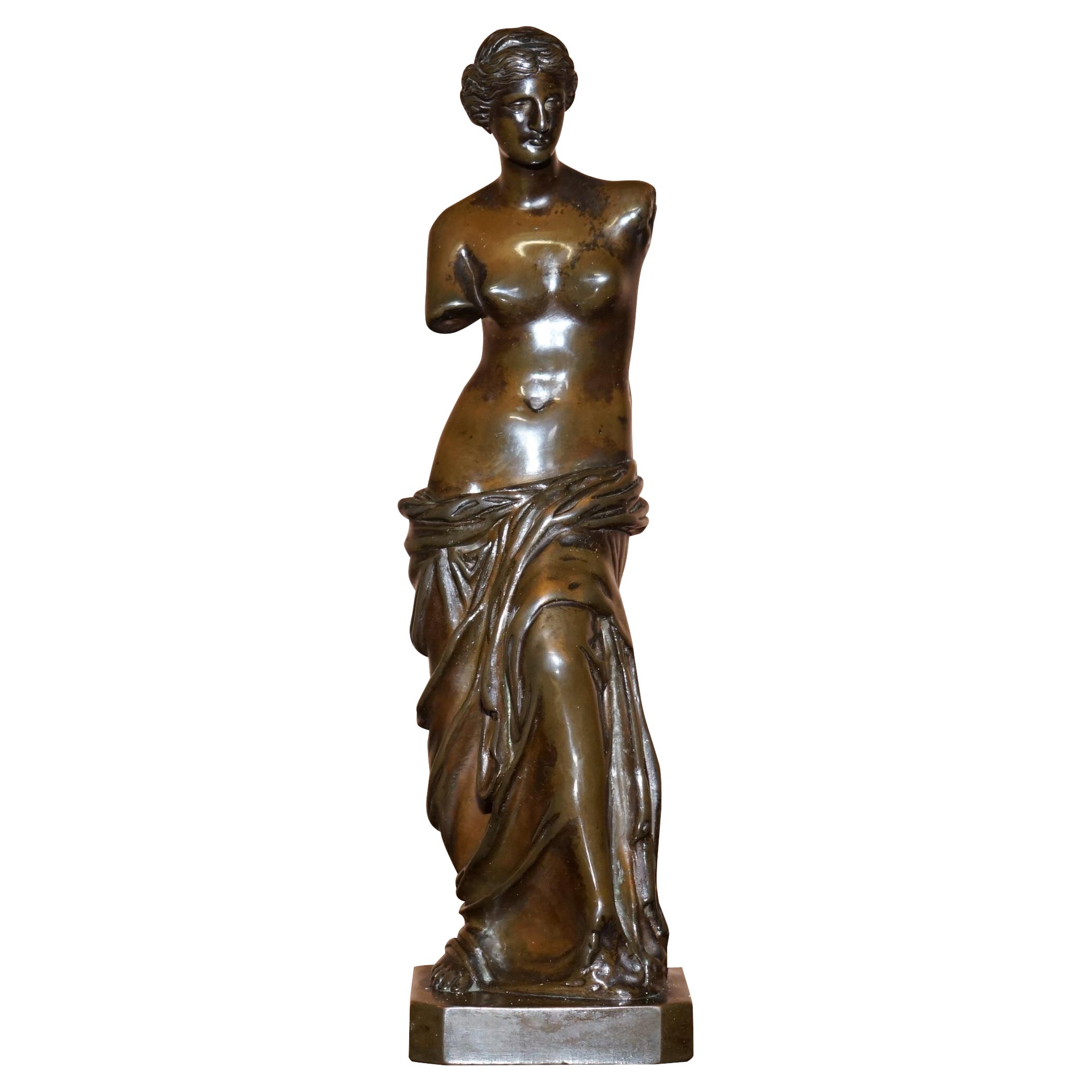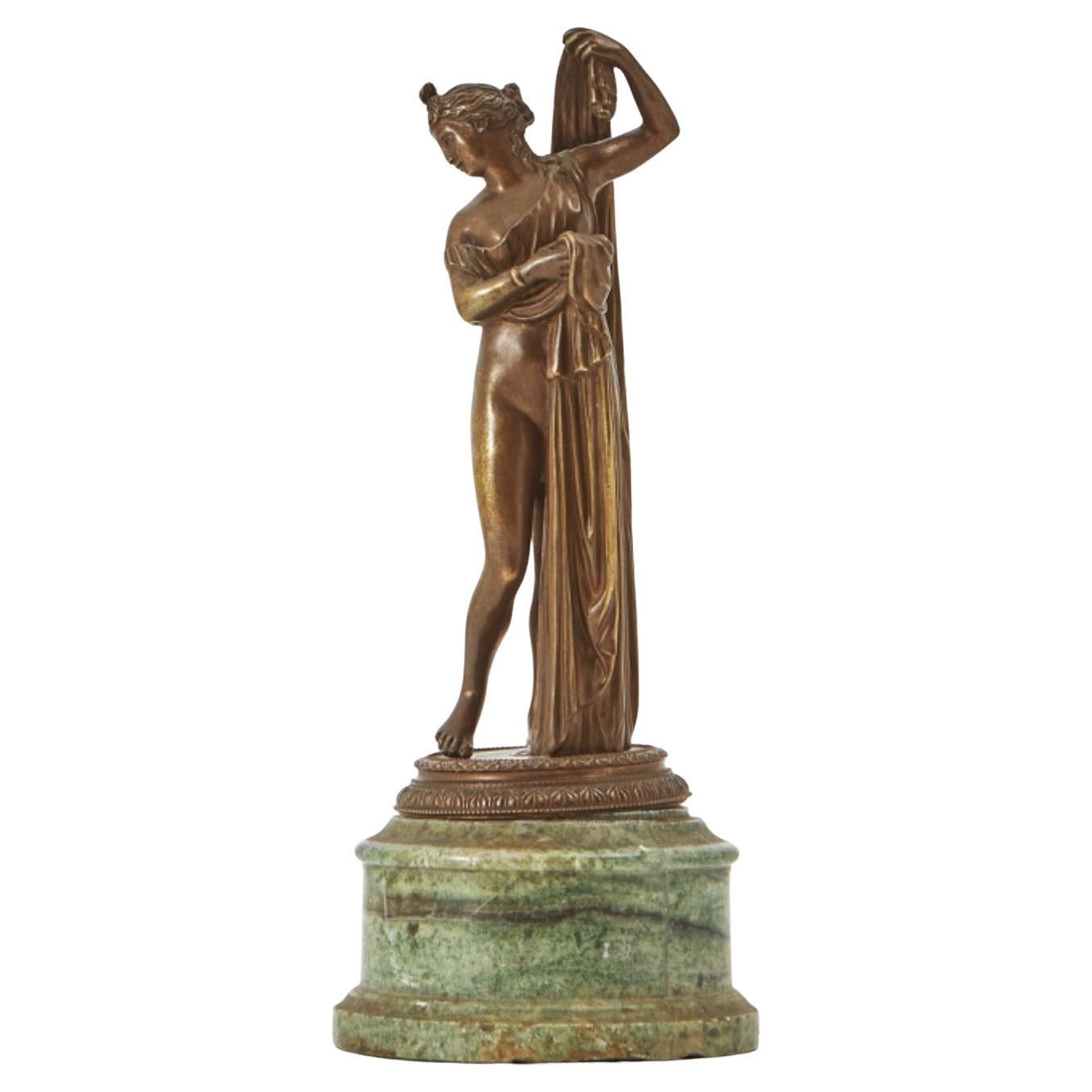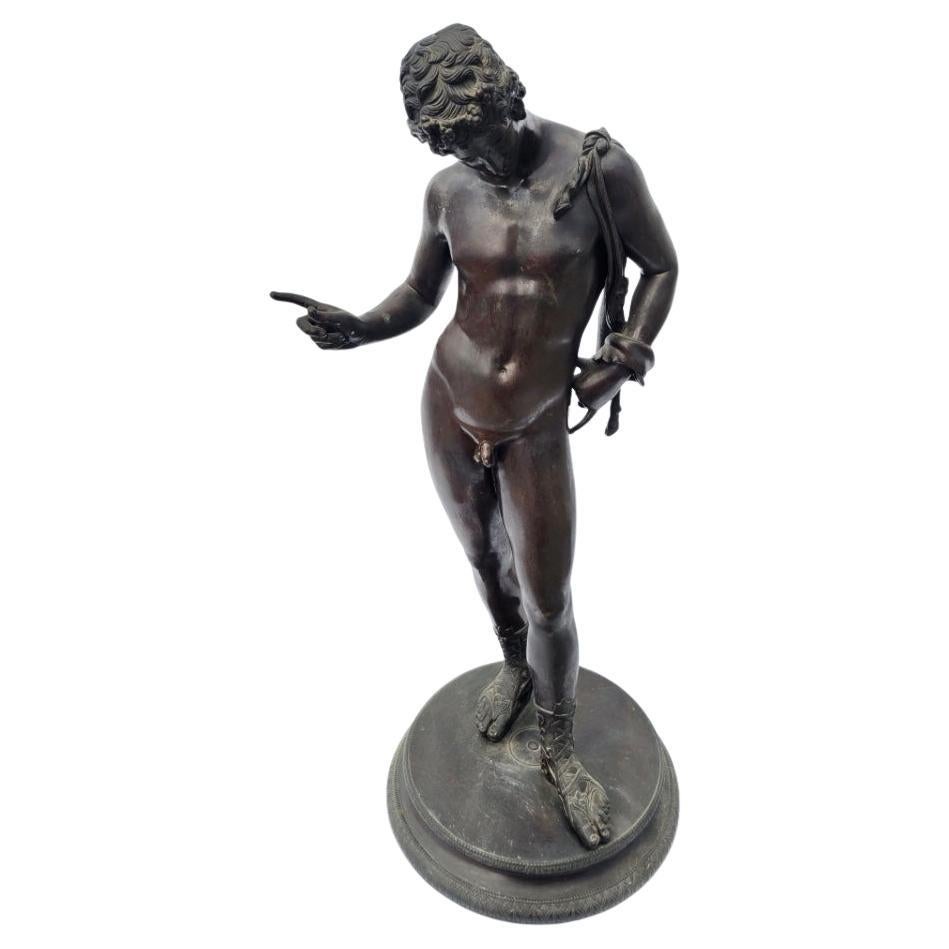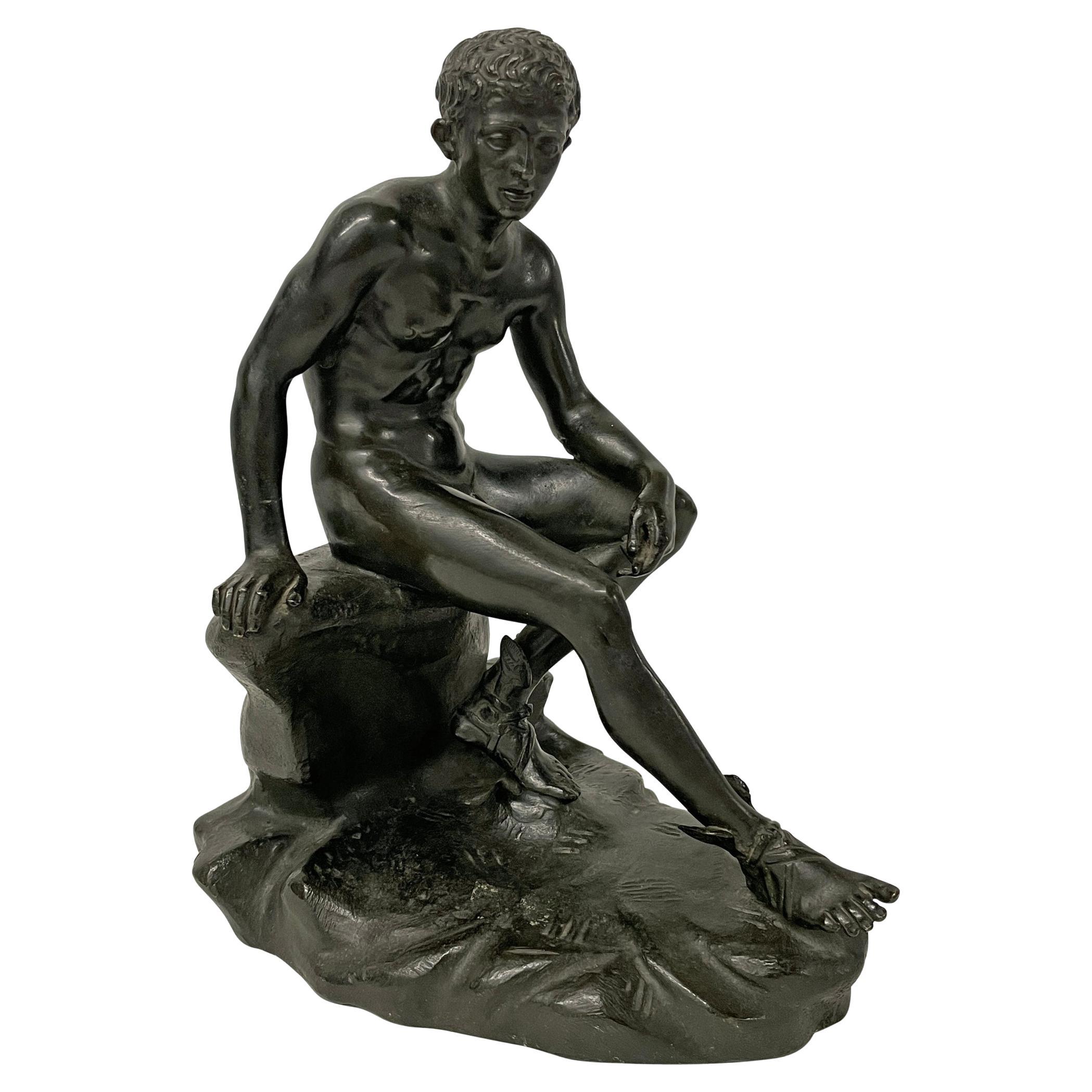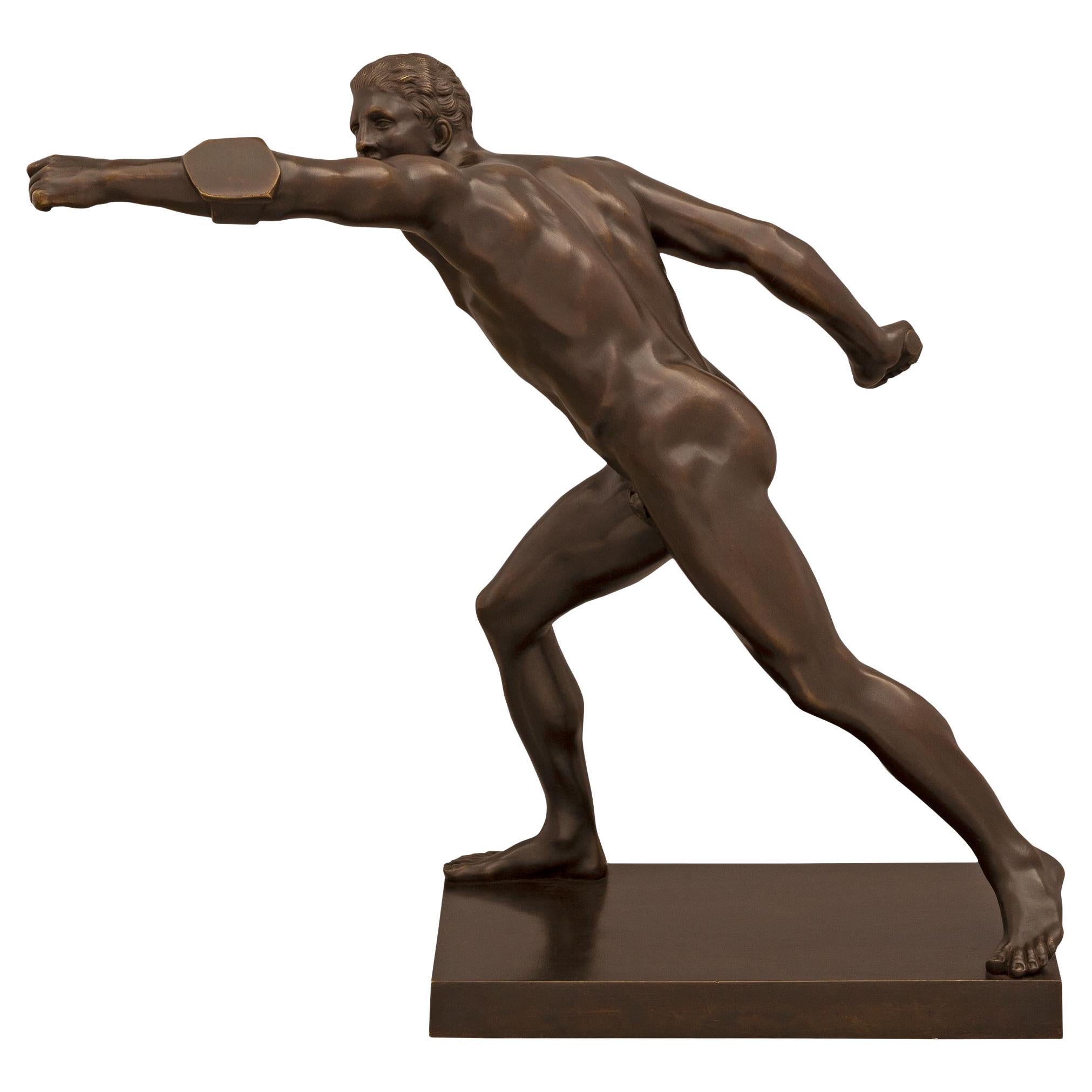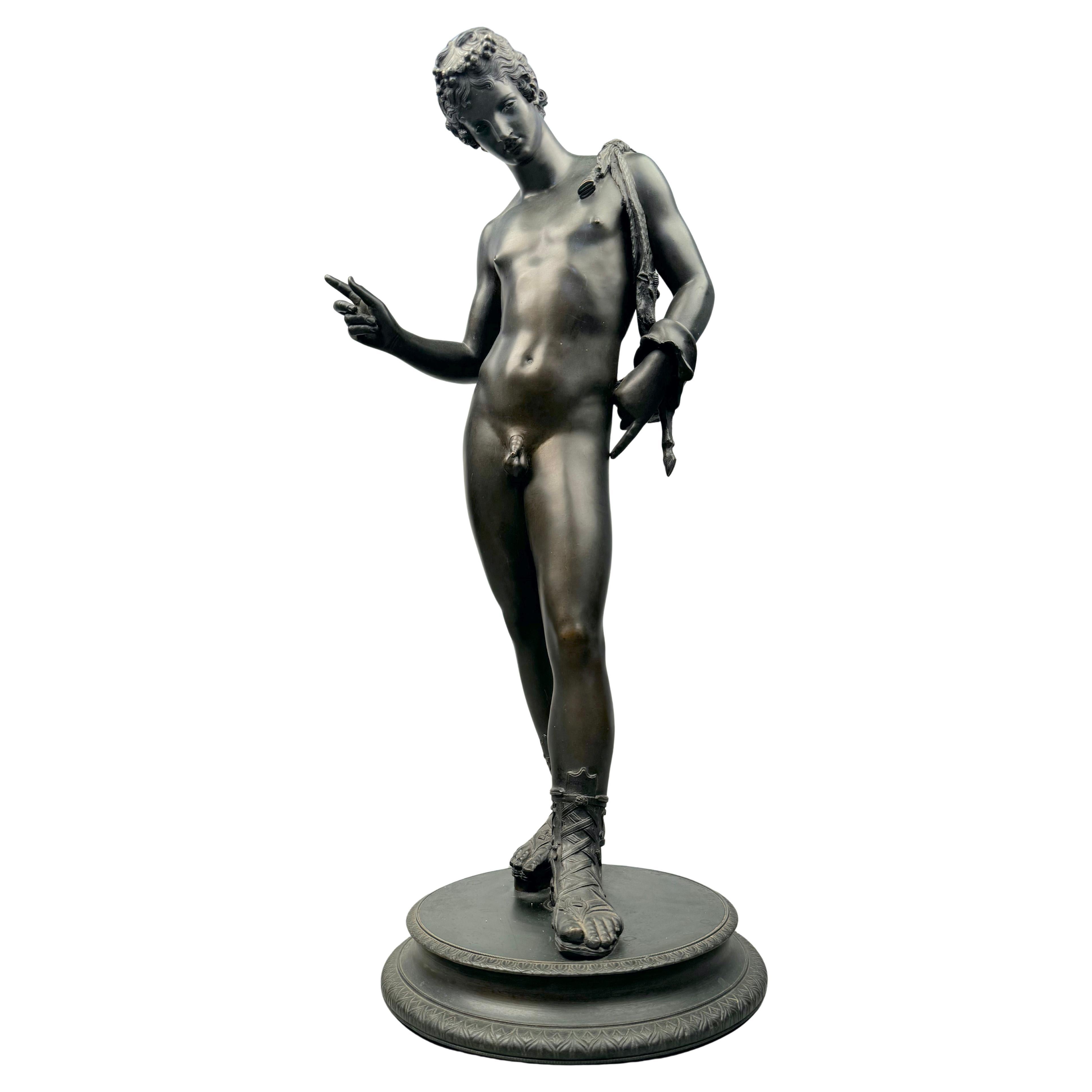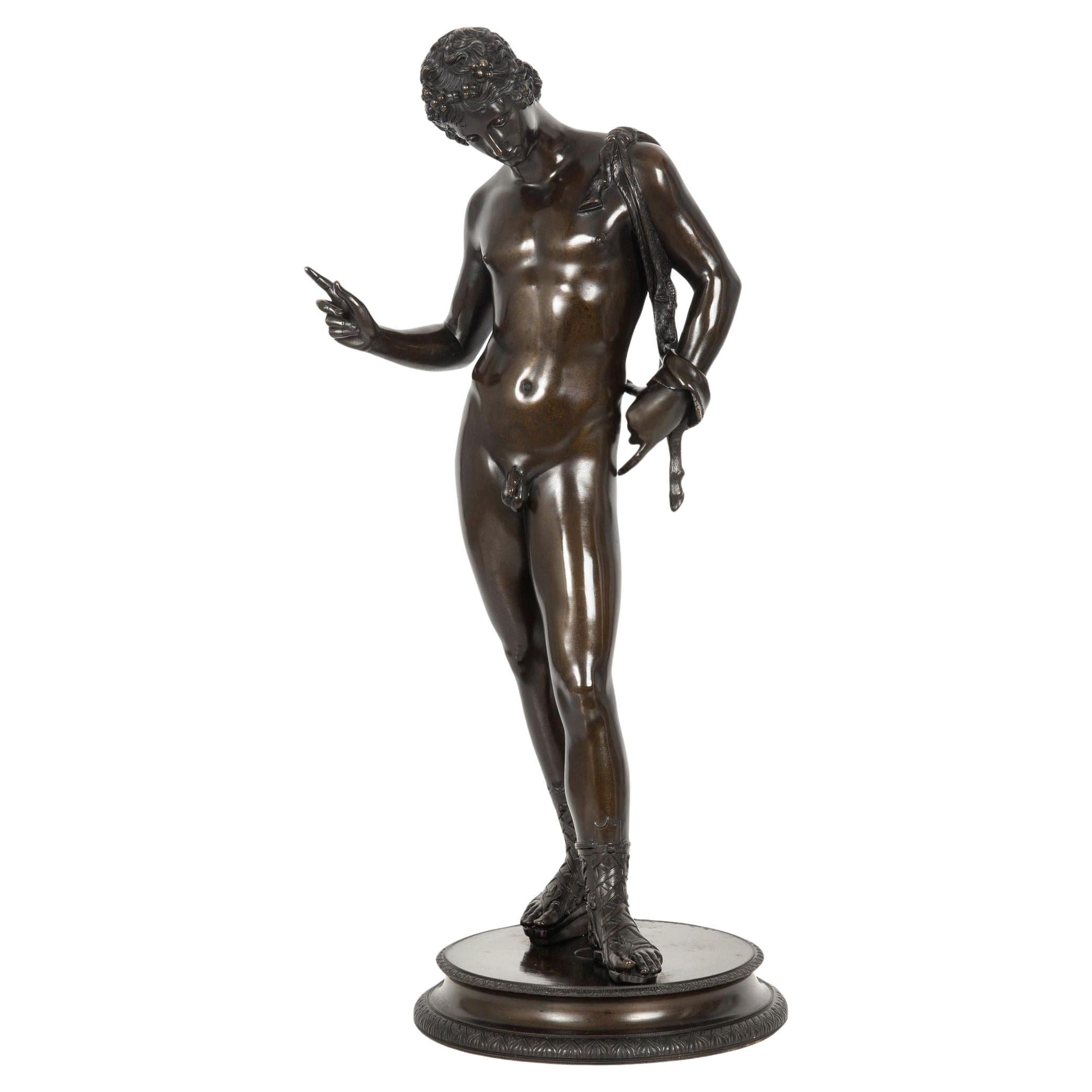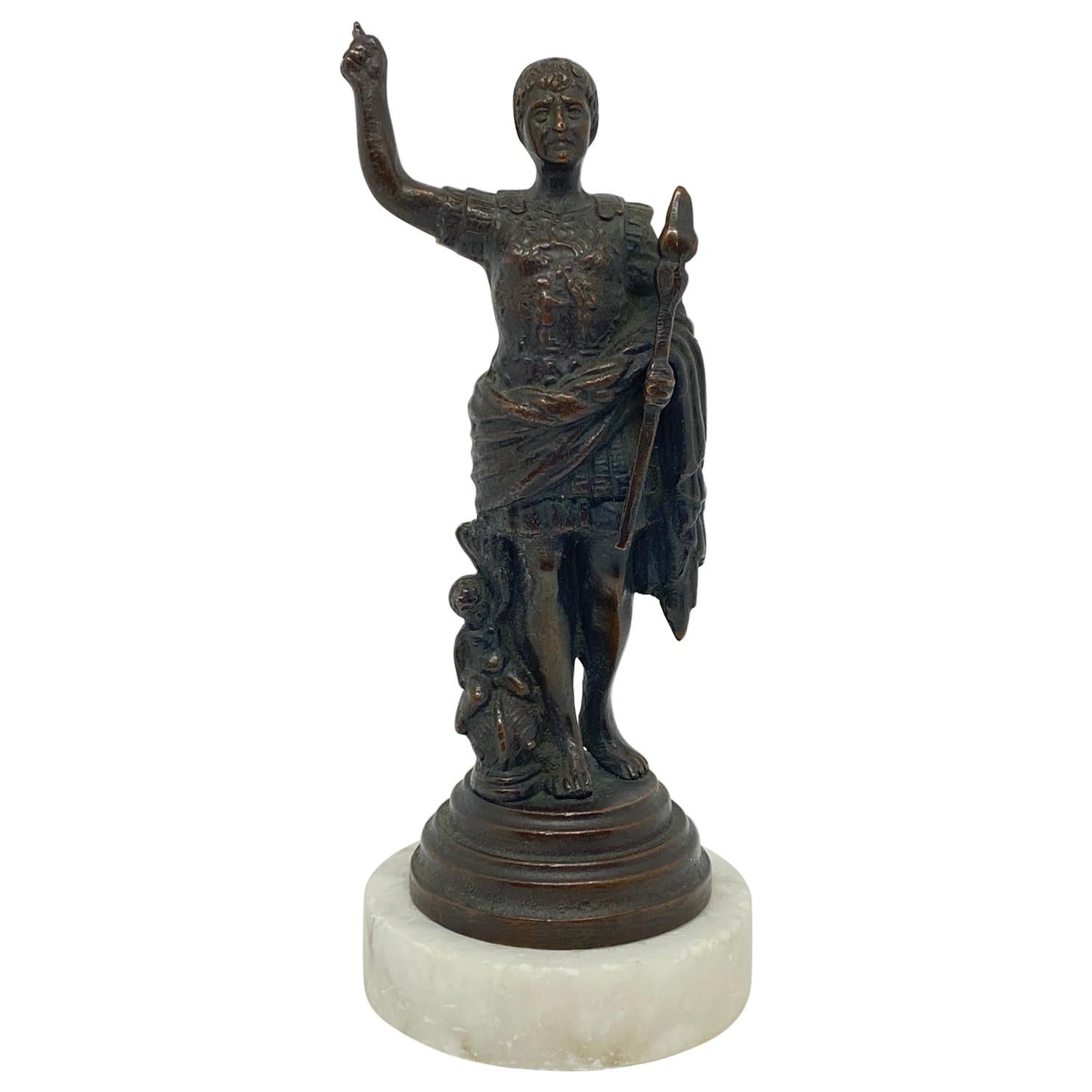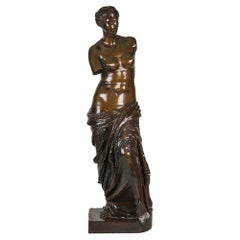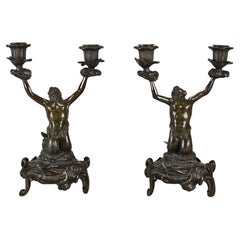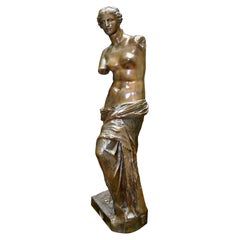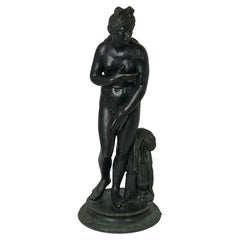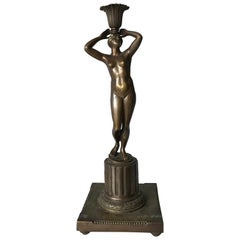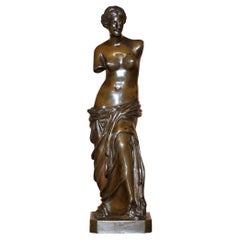
19th Century Grand Tour Italian Bronze of the 'Callypygian Venus'
View Similar Items
Want more images or videos?
Request additional images or videos from the seller
1 of 11
19th Century Grand Tour Italian Bronze of the 'Callypygian Venus'
About the Item
- Dimensions:Height: 36.23 in (92 cm)Width: 11.82 in (30 cm)Depth: 13.78 in (35 cm)
- Style:Neoclassical (In the Style Of)
- Materials and Techniques:
- Place of Origin:
- Period:1900-1909
- Date of Manufacture:1900
- Condition:Wear consistent with age and use. Please note that our items are genuine antiques with considerable age. It is therefore normal that they will show some signs of wear and handling to the surface. This change to the surface is known as 'patina' and confirms the age of the item.
- Seller Location:London, GB
- Reference Number:Seller: 77531stDibs: LU3216333729112
About the Seller
5.0
Gold Seller
Premium sellers maintaining a 4.3+ rating and 24-hour response times
Established in 1936
1stDibs seller since 2017
77 sales on 1stDibs
Typical response time: 1 hour
Authenticity Guarantee
In the unlikely event there’s an issue with an item’s authenticity, contact us within 1 year for a full refund. DetailsMoney-Back Guarantee
If your item is not as described, is damaged in transit, or does not arrive, contact us within 7 days for a full refund. Details24-Hour Cancellation
You have a 24-hour grace period in which to reconsider your purchase, with no questions asked.Vetted Professional Sellers
Our world-class sellers must adhere to strict standards for service and quality, maintaining the integrity of our listings.Price-Match Guarantee
If you find that a seller listed the same item for a lower price elsewhere, we’ll match it.Trusted Global Delivery
Our best-in-class carrier network provides specialized shipping options worldwide, including custom delivery.More From This Seller
View All19th Century Art Nouveau Bronze Entitled "Venus & Cupid" by Jean Sul-Abadie
By Jean Abadie
Located in London, GB
A very fine bronze study of Venus taking an arrow from Cupid her son, who at times would shoot his arrows without meaning or reason into the hearts of men, igniting their desire. Exhibiting excellent rich brown patina and good detail, signed Sul Abadie and stamped.
Additional information
Height: 93 cm
Condition: excellent condition
Circa: 1885
Materials: bronze & marble
SKU: 4979
ABOUT
Jean Sul-Abadie
Jean Sul-Abadie (Born 1850 ~ Died 15th April 1890) was a French artist, a pupil of Jouffroy and Falguière. Specialising in bronze sculpting in the Art Nouveau style. He made his Salon debut in 1872.
Cupid & Venus
Different tales exist about the origin of Venus and Cupid. Some say that Venus, the goddess of love and beauty, had a love affair with Mars, the god of war. Out of this relationship, Cupid was born. In the following painting you see Venus with Mars, who is being disarmed by Cupid.
Cupid has attributes from both of his parents. Like his mother he is considered to be the god of love, or more precisely, the god of falling in love. He is portrayed as an innocent little child with bow and arrows. He shoots arrows to the heart, and awakening a love that you’re powerless to resist.
In classical mythology, Cupid (Latin Cupido, meaning “desire”) is the god of desire, erotic love, attraction and affection. He is often portrayed as the son of the love goddess Venus and the war god Mars, and is known in Latin also as Amor (“Love”). His Greek counterpart is Eros.
Although Eros is in Classical Greek art as a slender winged youth, during the Hellenistic period, he was increasingly portrayed as a chubby boy. During this time, his iconography acquired the bow and arrow that represent his source of power: a person, or even a deity, who is shot by Cupid’s arrow is filled with uncontrollable desire. In myths, Cupid is a minor character who serves mostly to set the plot in motion. He is a main character only in the tale of Cupid and Psyche, when wounded by his own weapons he experiences the ordeal of love. Although other extended stories are not told about him, his tradition is rich in poetic themes and visual scenarios, such as “Love conquers all” and the retaliatory punishment or torture of Cupid.
In art, Cupid often appears in multiples as the Amores, or amoriniin the later terminology of art history, the equivalent of the Greek erotes. Cupids are a frequent motif of both Roman art and later Western art of the classical tradition. In the 15th century, the iconography of Cupid starts to become indistinguishable from the putto.
Cupid continued to be a popular figure in the Middle Ages, when under Christian influence he often had a dual nature as Heavenly and Earthly love. In the Renaissance, a renewed interest in classical philosophy endowed him with complex allegorical meanings. In contemporary popular culture, Cupid is shown drawing his bow to inspire romantic love, often as an icon of Valentine’s Day.
Venus is the Roman goddess whose functions encompassed love, beauty, sex, fertility, prosperity, victory, and desire. In Roman mythology, she was the mother of the Roman people through her son, Aeneas, who survived the fall of Troy...
Category
Antique Late 19th Century French Art Nouveau Figurative Sculptures
Materials
Breccia Marble, Bronze
Late 19th Century Art Nouveau Sculpture "Venus de Milo" by F. Barbedienne
By F. Barbedienne Foundry
Located in London, GB
A large and impressive late 19th Century bronze study of the famous Venus de Milo sculpture of antiquity with excellent rich brown patina and good hand finished surface detail, inscribed F.Barbedienne foundry
ADDITIONAL INFORMATION
Height: 95 cm
Width: 28 cm
Depth: 28 cm
Condition: Excellent Original Condition
Circa: 1890
Materials: Bronze
Foundry: F.Barbedienne
SKU: 7741
ABOUT
The Barbedienne Foundry is a famous 19th century bronze foundry, whose statues and art objects became rapidly very renowned. This bronze studio co-worked with other trades, and put his name to a great variety of works, such as furnishing in particular. Attending every World's Fair of its time, the Barbedienne Foundry was regularly awarded, notably at the World's Fair of 1855 where it was awarded the Great Medal of Honor.
A Parisian bronze maker and caster, Ferdinand Barbedienne (1810-1892) creates a firm in 1839 in collaboration with Achille Collas, the inventor of the mechanical method to obtain copies of sculptures at a smaller scale. With this groundbreaking proceed, they facilitated an unprecedented production. Under the “Collas et Barbedienne” name, they specialized in Antiquity copies and perfected new chemical methods for the color and patina finish of their bronzes. As a true Romantic, Ferdinand Barbedienne is committed to democratization of arts, he thus realizes numerous Antiquity copies and stimulates his contemporaries’ works broadcasting. A great deal of famous sculptures are hence cast by the Barbedienne Foundry. All his life, Barbedienne co-worked with the greatest artists, sculptors or designers of his time, such as Edouard Lievre, Ferdinand Levillain, Attarge, Aizelin, Barye or Fremiet.
Statues aside, he products a great deal of decorative artifacts, such as clocks, vases, mirrors, etc. Since 1855, Ferdinand Barbedienne collaborates with the famous decoration designer Louis-Constant Sévin (1821-1888). Joining the firm as a sculptor-designer, he stays loyal to it his life long, always finding more new designs for daily objects, which hence become true art works. Sevin’s creations, specialized in the “Neo-Greek” style, were particularly appreciated for antiquity reference in decorative arts, just like the great mirror preserved by the Orsay Museum. He also teams up with enamelers including Alfred Serre, and develops a set of “cloisonnés” enamels that made the headlines at the World's Fair of 1862 in London, which was the very beginning of the art of enamel’s return. In collaboration with Serre, Barbedienne realized between 1878 and 1889 the Monumental Clock in Renaissance style, decorated with enamels, which is preserved in the Paris City Hall.
Venus de Milo
Facts about Venus de Milo sculpture.
For much of the world, the mystery of the Venus de Milo lies in her missing arms. But there’s much more to this iconic statue than a couple of absent appendages.
1. Venus de Milo‘s title is a bit misleading.
It’s popularly believed that this Grecian statue depicts the Greek Goddess of love and beauty, who was often rendered half-naked. However, the Greeks would have called this deity Aphrodite. Nonetheless, the Roman-inspired Venus de Milo caught on.
2. She’s named in part for where she was discovered.
On April 8, 1820, a farmer named Yorgos Kentrotas came across the statue in pieces within the ruins of an ancient city on the island of Milos (formerly known as Melos).
3. Alexandros of Antioch is credited with her creation.
A sculptor of the Hellenistic period, Alexandros is believed to have carved this masterpiece between 130 and 100 BCE. The inscription on the plinth—the slab on which the statue rested—that identified him as Venus de Milo‘s creator was lost nearly 200 years ago.
4. She might not be Venus.
Some have suggested the sculpture is not Aphrodite/Venus, but Amphitrite, the sea goddess who was particularly adored on Milos. Still others have proposed she’s Victory, or perhaps a prostitute. With her arms long missing, would-be context clues have been lost for centuries. A spear could have meant one thing, a spool of thread another. If she held an apple—as some reports claim—it could mean she was Aphrodite, holding the award given to her by Paris before the Trojan War began. To this day, it’s a matter of passionate debate.
5. She became a gift to the King of France.
When Kentrotas called upon a French naval officer to help him unearth the spectacular sculpture, he began a chain of events that would eventually lead to the Marquis de Rivière presenting Venus de Milo to Louis XVIII. In turn, the ruler gave the statue to the Louvre, where it is on display to this very day.
6. The loss of her limbs is the fault of the French.
Kentrotas did find fragments of an arm and a hand when he uncovered the statue in the ruins, but as Venus de Milo was being reassembled, those arms were discarded for having a “rougher” appearance. Modern art historians believe that the variation of finish does not mean those arms did not belong to Venus, but both the arms and the original plinth have been lost since the piece moved to Paris in 1820.
7. The original plinth was ditched on purpose.
Sight unseen, early 19th century art historians decided the newly discovered Venus must have been the work of Greek artist Praxiteles, and publicized the work as such. This attribution would have placed the piece in the Classical period (5th through 4th centuries BCE), which was more respected artistically than the Hellenistic period. To save face and better promote Venus de Milo—even at the cost of misinforming the public—the plinth was removed before it was presented to the King.
8. Venus de Milo was meant to make up for a national embarrassment.
During his conquests, Napoleon Bonaparte had plundered one of the finest examples of Greek sculpture, Venus de’ Medici, from Italy. In 1815, the French government returned that beloved sculpture, but in 1820, France embraced the chance to fill the hole its absence left in the French culture and national pride. As such, Venus de Milo was promoted as being even greater than Venus de’ Medici upon her Louvre debut. The ploy worked, and the piece was met with almost universal praise from artists and critics.
9. Renoir was not impressed.
Perhaps the most famous of Venus de Milo‘s detractors, the celebrated Impressionist painter dismissed this delicate depiction of grace and female beauty as “a big gendarme.”
10. She went into hiding during World War II.
By the autumn of 1939, war threatened to descend on Paris, so Venus de Milo along with some other priceless pieces, such as Winged Victory of Samothrace and Michelangelo’s Slaves, were whisked away for safekeeping at various châteaux in the French countryside.
11. She’s been robbed!
Venus is missing more than just her arms. She was originally draped in jewellery including a bracelet, earrings and a headband. These flourishes are long lost, but the holes for fixing them to the piece remain in the marble, giving clues to the missing accessories.
12. She lost her colour.
While it’s easy for today’s art admirers to think of Greek statues as white, the marble was often painted in the style of polychromy. However, no trace of the original paint scheme remains on Venus de Milo today.
13. She’s taller than most people.
Even with her slight slouch, Venus de Milo stands at 6 feet 8 inches tall.
14. She could be a copy.
Art historians have noted that Venus de Milo bears a striking resemblance to Aphrodite of Capua, which is a Roman era copy of a possibly late 4th century BCE bronze Greek original. That would be at least 170 years before Alexandros carved his goddess, leading some to speculate that both statues are actually replicas of an older statue...
Category
Antique Late 19th Century French Art Nouveau Figurative Sculptures
Materials
Bronze
19th Century Art Nouveau Pair of French Bronze Mermen Candlesticks
Located in London, GB
A highly decorAtive pair of late 19th Century bronze candlesticks with two mermen knelt on bronze tripods ornately decorated holding up the candle holders with excellent hand chased ...
Category
Antique Late 19th Century French Art Nouveau Figurative Sculptures
Materials
Bronze
"Djinn Étlalon Barbe" 19th Century Animalier Bronze by P J Mêne
By Pierre Jules Mêne
Located in London, GB
A very fine French Animaliers bronze study of a stallion standing behind a post and rail fence exhibiting excellent hand finished surface detail and good...
Category
Antique 1850s French Other Animal Sculptures
Materials
Bronze
Mid 19th Century Animalier Bronze entitled "Ibrahim" by P J Mêne
By Pierre Jules Mêne
Located in London, GB
Excellent French mid 19th Century Animalier bronze portaiture study of the French Derby winner "Ibrahim", with rich brown lightly rubbed patination and fine hand finished surface det...
Category
Antique Mid-19th Century French Art Nouveau Animal Sculptures
Materials
Bronze
19th Century Animalier Bronze Sculpture "Standing Cockerel" by Paul Comolera
By Paul Comolera
Located in London, GB
A very fine large late 19th Century Animalier gilt bronze study of a standing cockerel with his chest pushed out in a proud pose as he crows to the eraly morning sunshine, the bronze surface with excellent deep golden colour and fine hand finished detail, signed P.Comolera
ADDITIONAL INFORMATION
Height: 31 cm
Width: 20 cm
Condition: Excellent Original Condition
Circa: 1900
Materials: Bronze
SKU: 9324
ABOUT
Paul Comolera (French, 1818 ~ 1897) Comolera was born in Paris, France. A very fine sculptor known mainly for his modelling of birds but he also produced some other animal figures as well as portrait busts. Comolera was a student of the early sculptor Francois Rude and he was the teacher of Jules Moigniez, one of the more important sculptors of the Animalier school. There is a distinct similarity in the detail, construction, form, and finish of the works of Comolera and his student Moigniez although Comolera’s birds are considered to be more in the naturalistic style as opposed to the romantic style of his pupil. Paul Comolera made his debut at the Salon in 1846 with a group called Golden Pheasants of China and continued to exhibit there until his death in 1897. Comolera’s bronzes...
Category
Antique Late 19th Century French Art Nouveau Animal Sculptures
Materials
Bronze
You May Also Like
19th Century Grand Tour Bronze Statue of Venus of Milo
Located in Vancouver, British Columbia
A very fine Grand Tour bronze study of the famous Venus de Milo with excellent rich brown patina and good hand finished surface detail. The casting is unusual in that it does not pretend to hide the many imperfections on the original.
It is signed on the base with "Reduction Mechanique Ronald Collas, and for the foundry F.Barbidienne Fondeur. Foundry stamp on the base
Considered by any to be the most beautiful Hellenistic statue to survive fro antiquity, the Venus of Milos...
Category
Antique Late 19th Century French Neoclassical Figurative Sculptures
Materials
Bronze
Capitoline Venus Grand Tour Mid 19th century bronze
By Praxiteles 1
Located in Mobile, AL
This grand tour bronze sculpture depicts the version of Venus so important to the history of art and literature in the U.S. that the original was temporarily loaned to the National Gallery of Art from the Capital Museums in Rome in 2011. Mark Twain visited Rome and upon his return home in 1867 he published "The Capitoline Venus" and he described the work as the “most illustrious work of ancient art the world can boast of". (with credit to the National Gallery of Art catalog...
Category
Antique Mid-19th Century European Grand Tour Figurative Sculptures
Materials
Bronze
Late 19th Century Grand Tour Italian Bronze Sculpture of Nude Venus Candlestick
Located in Lisse, NL
Elegant and highly stylish candlestick or table lamp.
This handcrafted and heavy quality, bronze candle stick or table lamp from the 1890-1910 era is in very good condition. This ro...
Category
Antique Late 19th Century Italian Grand Tour Table Lamps
Materials
Bronze
Lovely 19th Century Antique Italian Venus De Milo Grand Tour Bronze Statue
Located in West Sussex, Pulborough
We are delighted to offer for sale this stunning late 19th century Italian grand tour Venus De Milo statue
A very good looking and decorative piec...
Category
Antique 19th Century Italian Victorian Figurative Sculptures
Materials
Bronze
19th Century Bronze Sculpture, Venus Callipyge, Grand Tour, Sommer Napoli
By Fonderia Sommer Napoli
Located in Stockholm, SE
A fine and rare Neapolitan Grand Tour bronze of the Venus Callipyge, after the original in National Archeological Museum of Naples. Signed Sommer, Napoli. An erotic bronze, the name ...
Category
Antique Late 19th Century Italian Grand Tour Figurative Sculptures
Materials
Marble, Bronze
Grand Tour Bronze Sculpture Of Narcissus Italian 19th Century
Located in Bradenton, FL
19th Century Grand Tour Bronze Sculpture of Narcissus. Narcissus is shown in a moment of self-reflection, standing in a contemplative pose. His idealized form highlights his youthful...
Category
Antique 19th Century Italian Grand Tour Figurative Sculptures
Materials
Bronze
